Hilary Schouten’s Path to Victory is Based on Mathematics.
Michigan's 3rd congressional district is the smallest in Michigan by voter population and includes Grand Rapids, Muskegon, and Grand Haven, touching Lake Michigan's shores. The voter population at one point was 561,206 (Scale Campaign, L2 Data) voters before the 2022 midterm election.
The 3rd district became recently popular nationally with the saga between representative (R) Justin Amash, President (R) Donald Trump, and later, representative (R) Peter Meijer.
Historically, Justin Amash came from the Michigan House of Representatives in Lansing, Michigan as a one-term representative from the 72nd district and was elected to US Congress from 2011 until 2021. Amash endorsed Ron Paul as the Republican nominee in 2012 and Ted Cruz in 2016. Even more uniquely, his beef with President Trump was notorious and that cemented the 3rd congressional district on the political map as a district to watch. Before the last redistricting in 2022, the community was still rated R + a few single points but that was probably misleading because Amash was trending very popular with the youth and center-left groups and the migrant population in West Michigan.
On the Democratic side, Governor Gretchen Whitmer grew up in the 3rd district and became politically very influential after she entered Michigan politics as a representative in 2003. At the time, the Democratic party was dreaming of passing the 100k votes mark for Kent county in the general election whereas the Republican party easily passed 130k in the county. Considering that the rest of the 3rd congressional district counties from 2000 to 2022 were mostly Republican, the district was known as a strong castle for the Republican party.
Life was easy for the local oligarch's Dick and Betsy Devos, ambassador and long-time philanthropist Peter Secchia, Meijer, and Van Andel power families. Kent GOP was run as a supposedly well-oiled machine even with the Democrats widely voiced concerns in the press. Things started to change after Whitmer took office in 2019 as a Governor of Michigan, and the donor class began to align with the new normal. Kent county turned blue, with the city of Grand Rapids completely evaporating any hopes for a Republican win. That trend continued to move the line to the left even after representative Peter Meijer was elected to represent the third congressional district in 2021. His family finally decided that they would rule the district instead of using Amash.
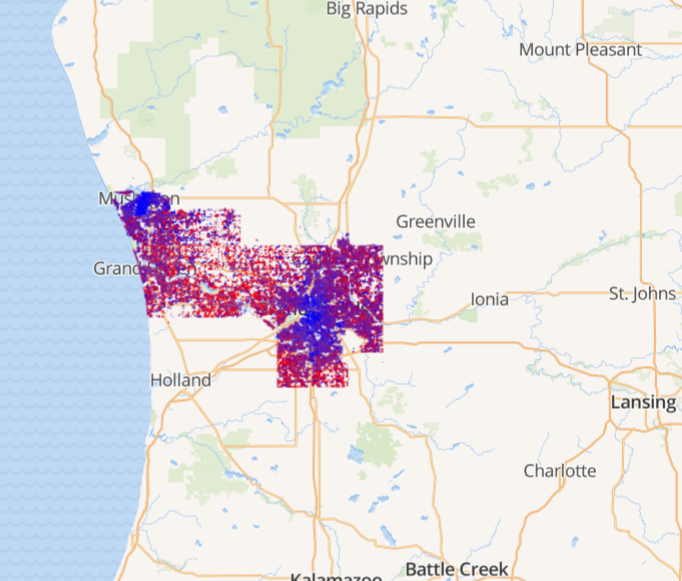
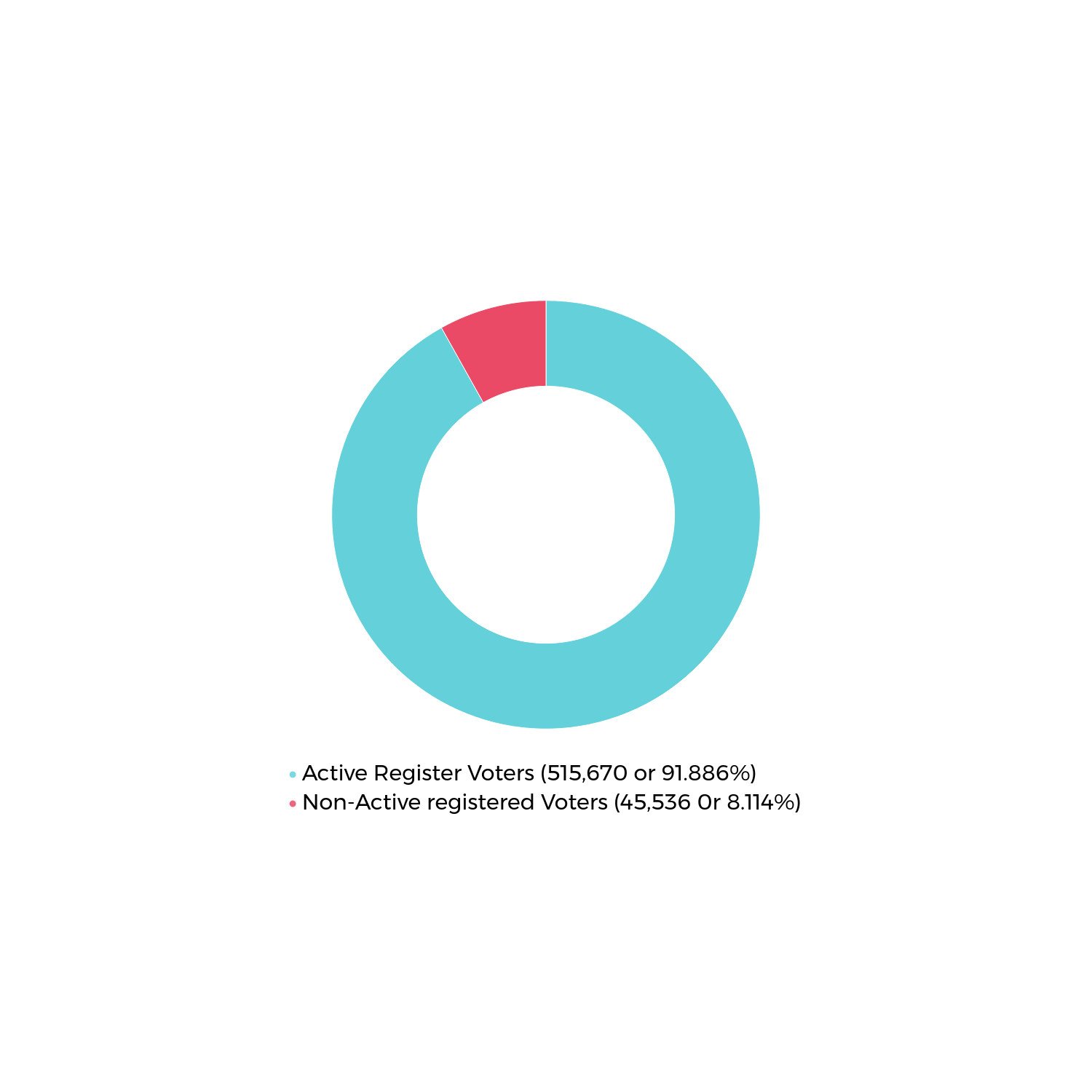 However, that was a short-lived glory when the local grassroots took on Meijer’s post-impeachment vote re-election with Ben Carson’s Housing and Urban Development Acting Assistant Secretary John Gibbs, endorsed by President Trump. Gibbs stopped Meijer in the Republican primary, in the summer of 2022. Gibbs had to face the top Democrat at the general election: Hillary Scholten. At that point, the actual voting map boundaries were redrawn thanks to the new census and the amendments to the MI constitution that the Democratic party added via a 2018 ballot proposal. The following analysis describes the current situation in the district's current and future election results, trends, and vision for the future of the district based on Scale Campaign's vision.
However, that was a short-lived glory when the local grassroots took on Meijer’s post-impeachment vote re-election with Ben Carson’s Housing and Urban Development Acting Assistant Secretary John Gibbs, endorsed by President Trump. Gibbs stopped Meijer in the Republican primary, in the summer of 2022. Gibbs had to face the top Democrat at the general election: Hillary Scholten. At that point, the actual voting map boundaries were redrawn thanks to the new census and the amendments to the MI constitution that the Democratic party added via a 2018 ballot proposal. The following analysis describes the current situation in the district's current and future election results, trends, and vision for the future of the district based on Scale Campaign's vision.
Before the 2022 general election, the voter's registration status was 515,670 (91.886%) active registered voters vs 45,536 (8.114%) non-active voters.
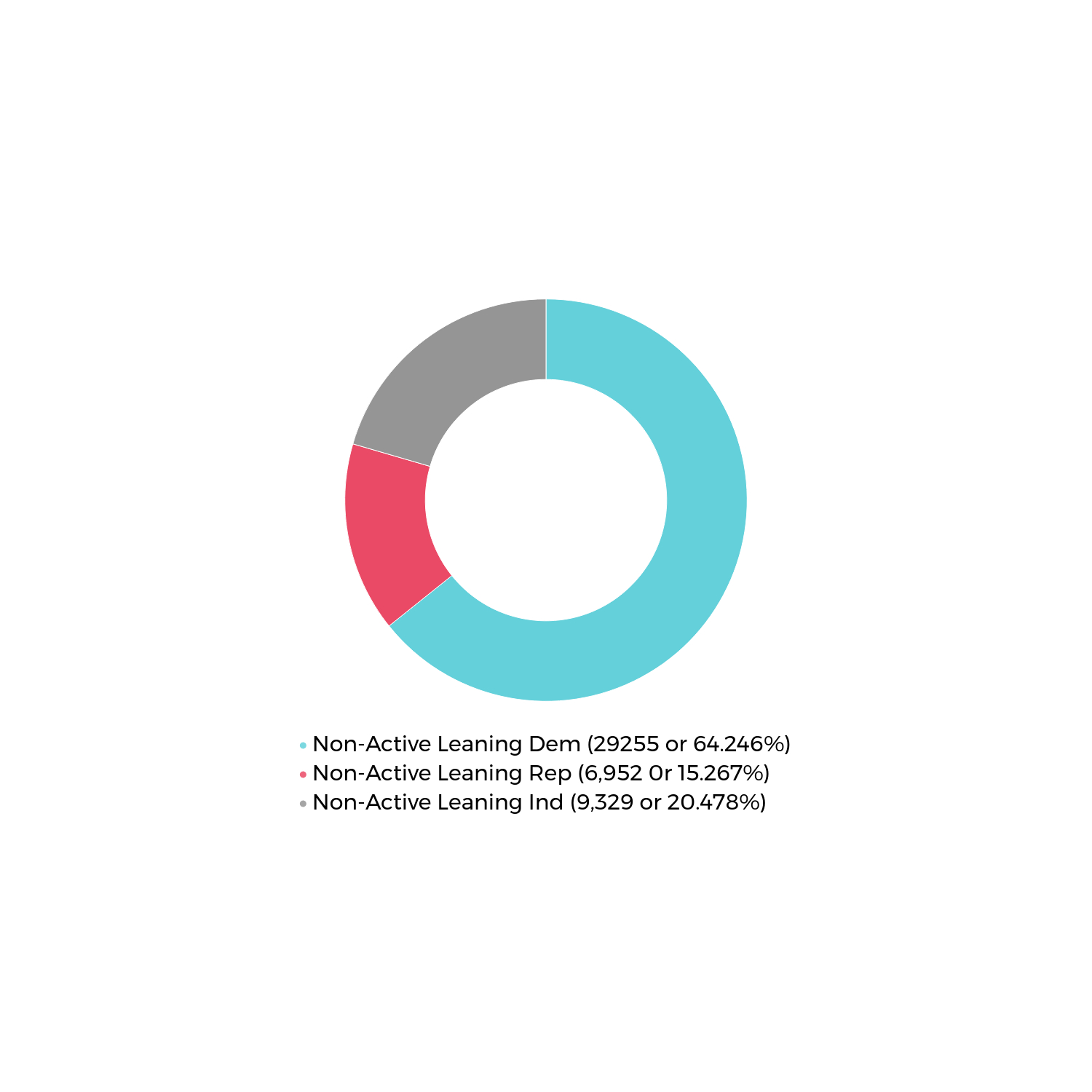
NON-ACTIVE VOTERS
Of those registered but not active to vote,
29,255 (64.246%) leaned Dem9,
329 (20.478%) leaned Independent
6,952 (15.267%) leaned Republicans
The female vs male split was around equal - at 50%
But the majority, at 79%, were not married.
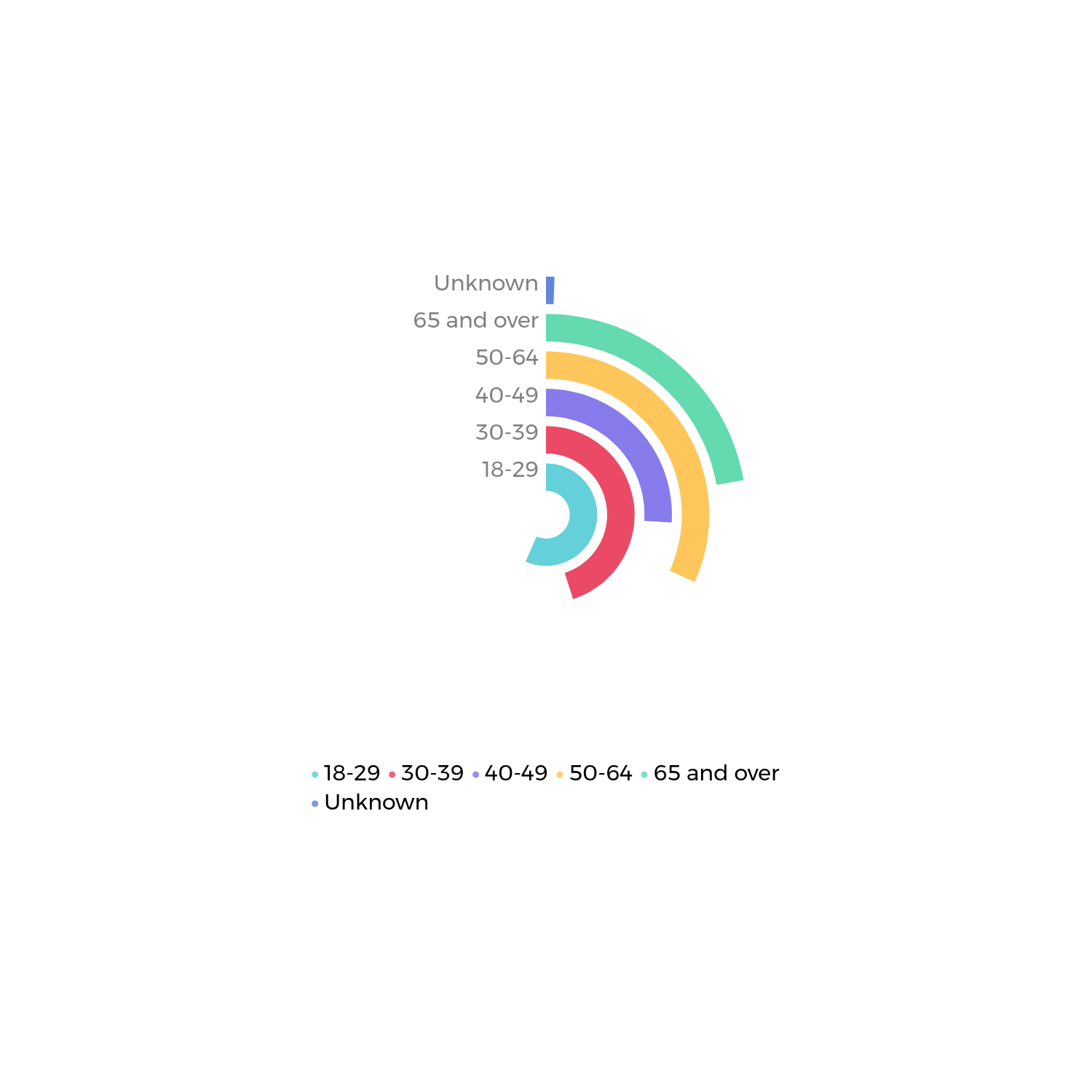
| Age | Voters | Percent |
|---|---|---|
| 18-29 | 14,129 | 31.028% |
| 30-39 | 11,264 | 24.736% |
| 40-49 | 6,498 | 14.270% |
| 50-64 | 7,942 | 17.441% |
| 65 and over | 5,560 | 12.210% |
| Unknown | 143 | 0.314% |
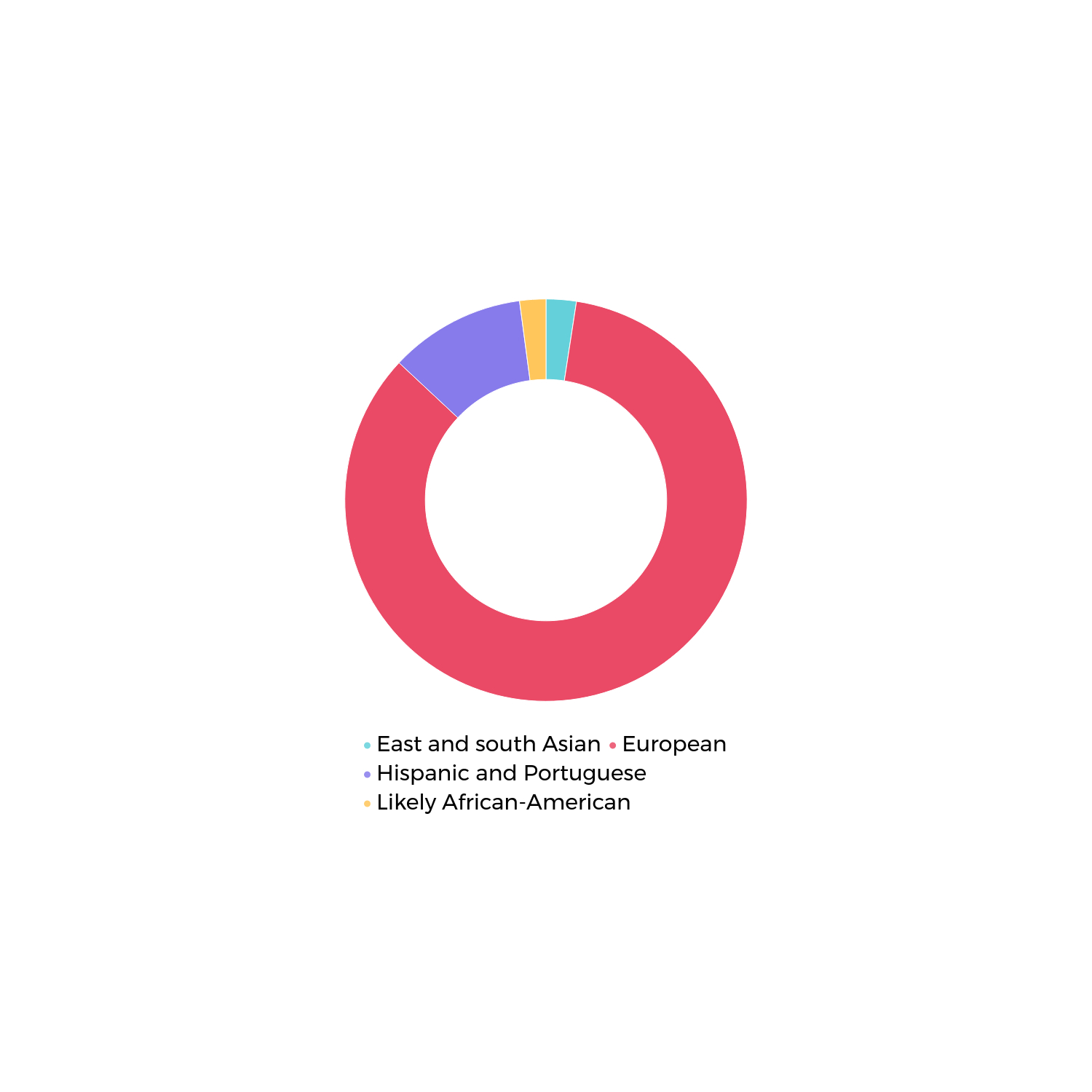
Looked by Broad ethnic grouping:
|
East South Asian - 875 (1.922%), European - 30,478 (66.932%), Hispanic and Portuguese 3,944 (8.661%), Likely African-American - 759 (1.667%) |
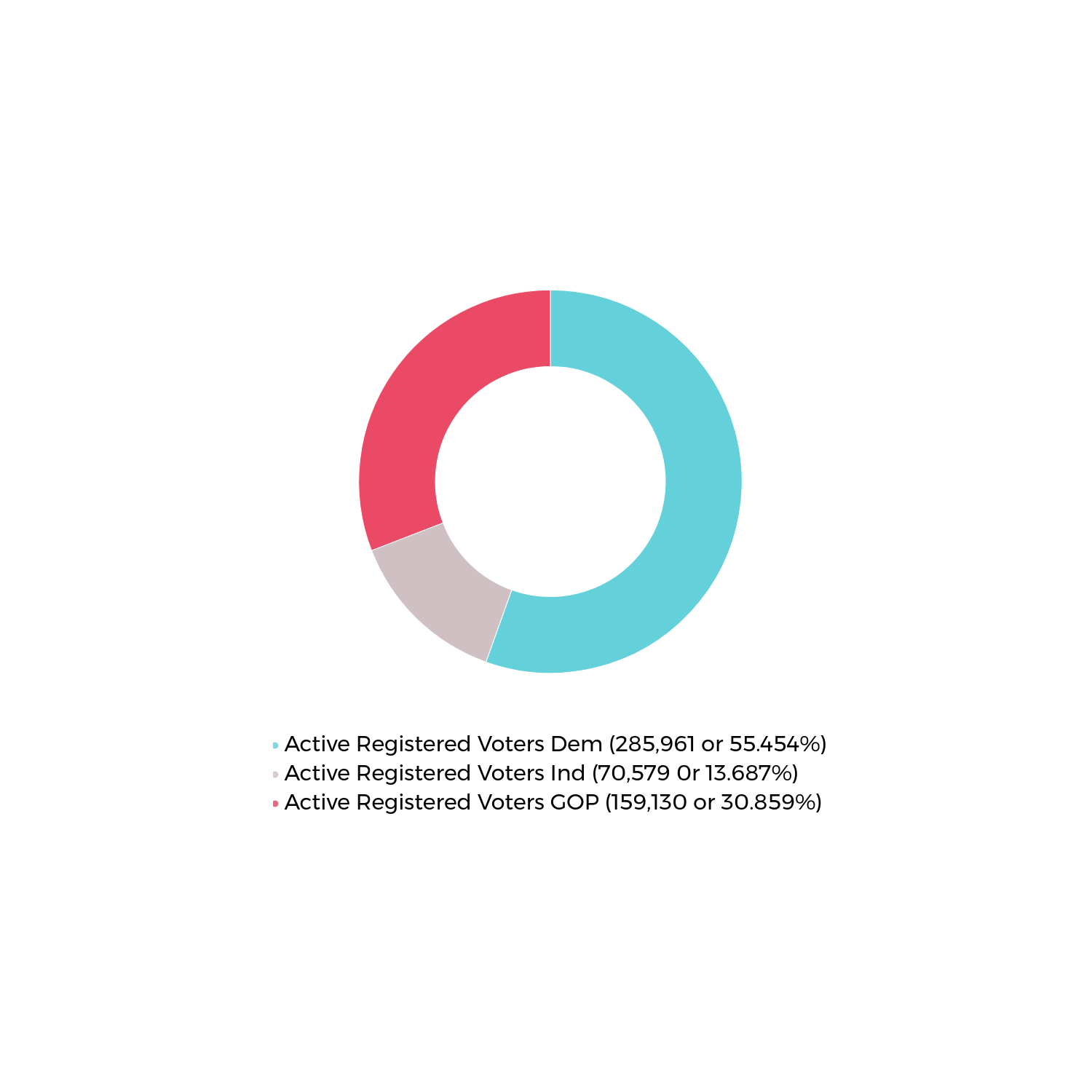
ACTIVE REGISTERED VOTERS By Political party Affiliation
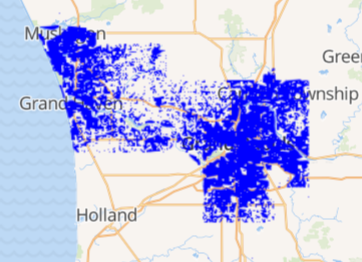 |
 |
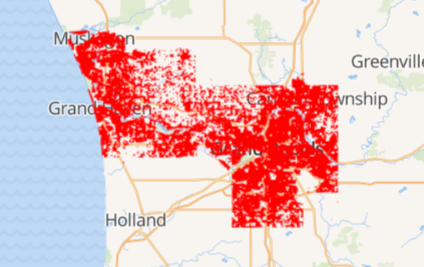 |
| Democratic - 285,961 (55.454%) | Non-Partizan - 70,579 (13,687%) | Republican - 159,130 (30,859%) |
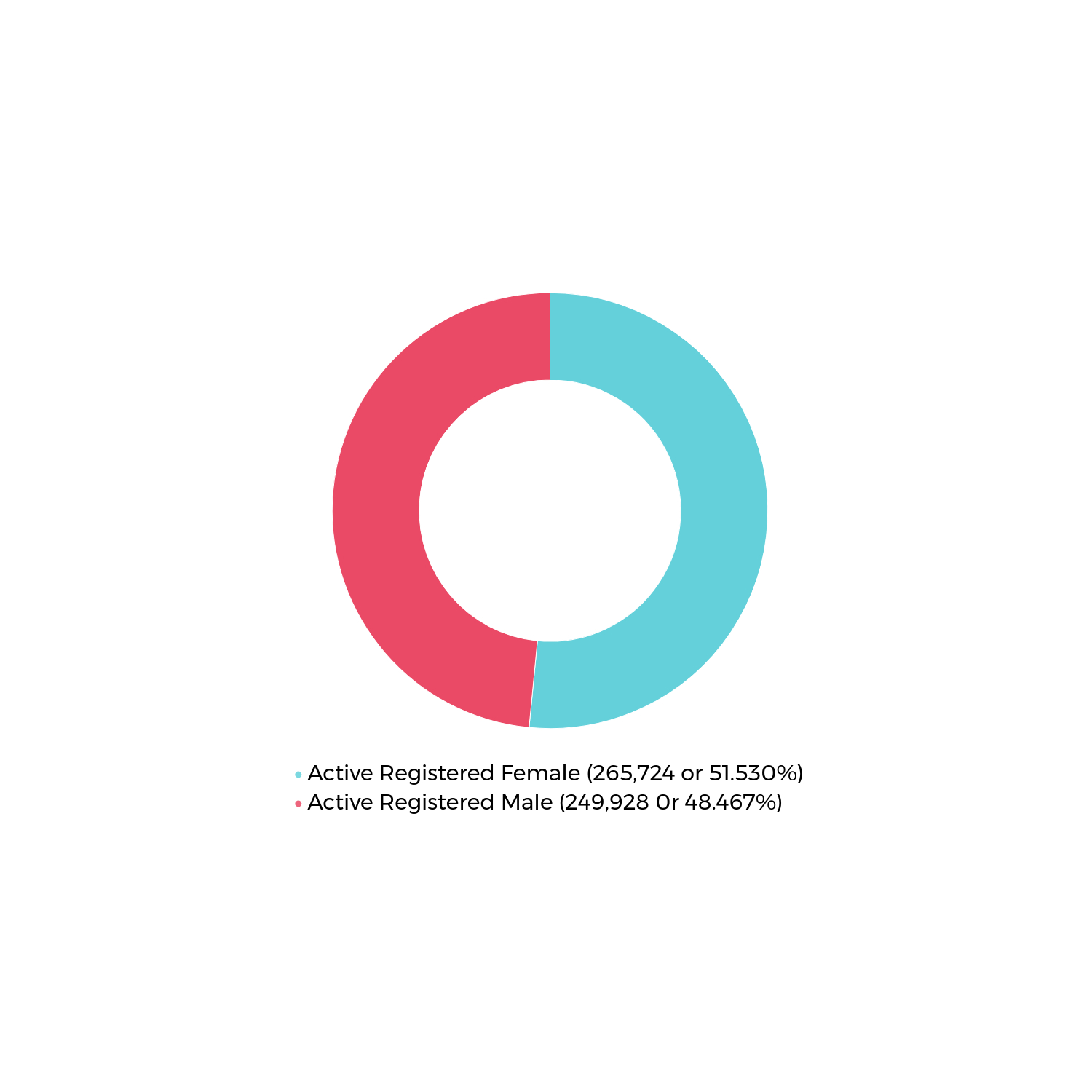
|
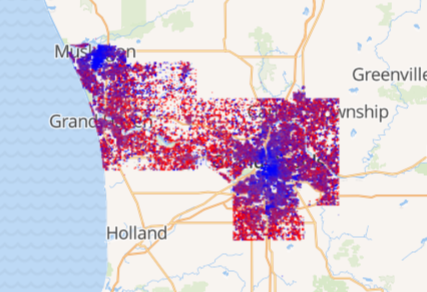 |
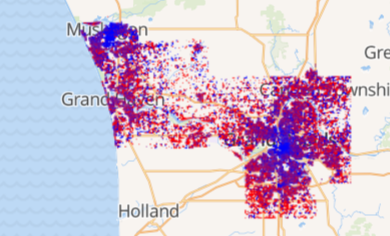 |
| Female - 265,724 (51,530%) | Male 249,928 (48.467%) |
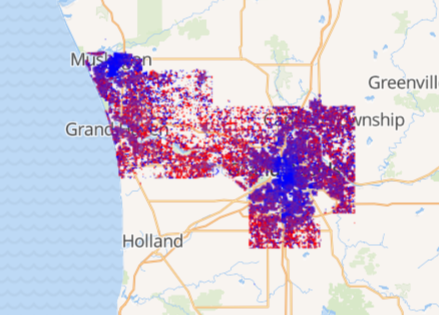 |
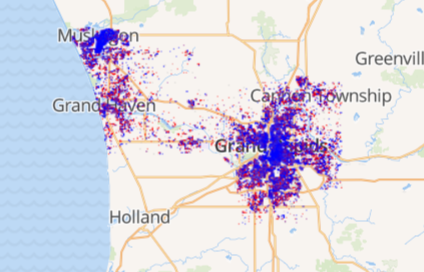 |
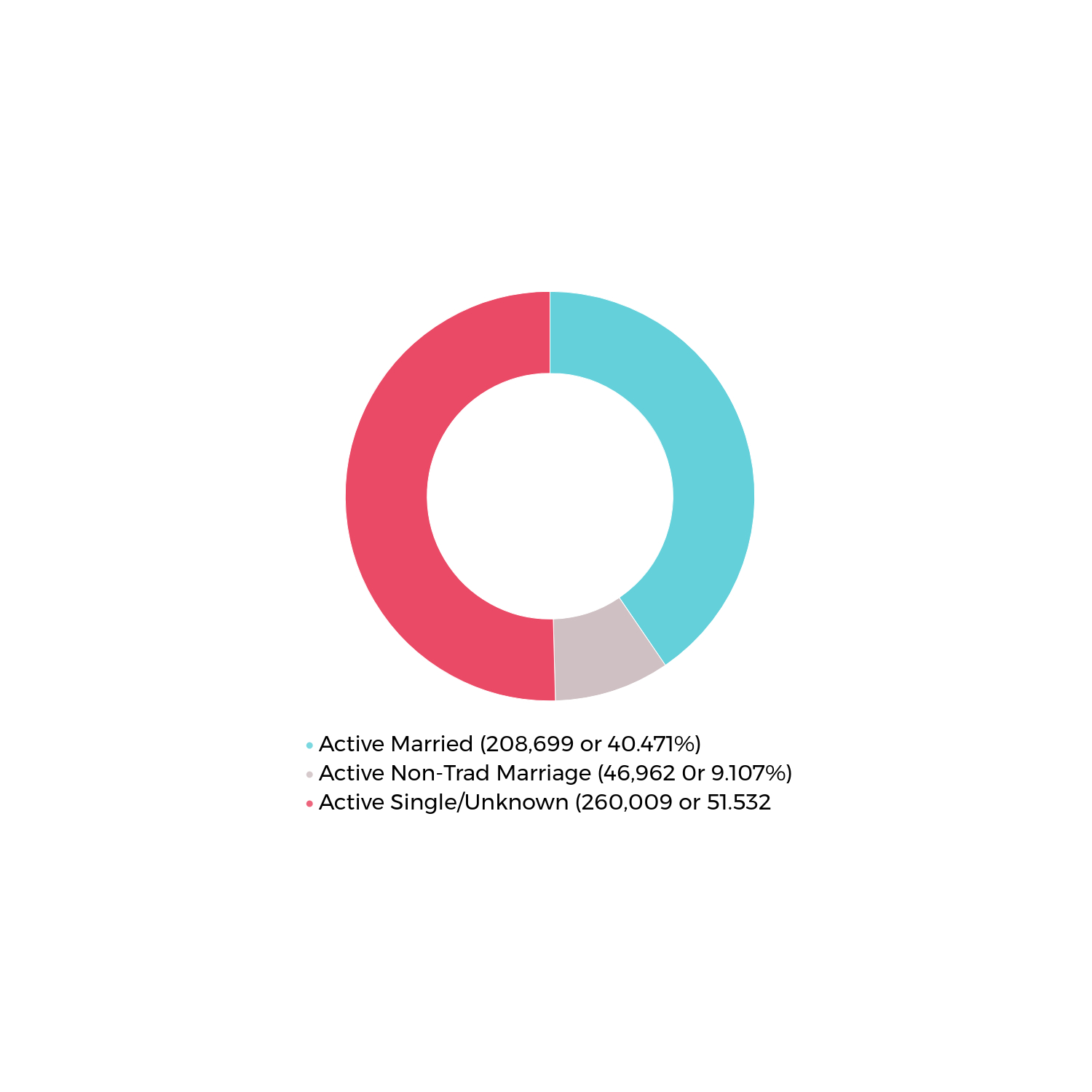 |
| Married 208,699 (40.471%) | Non-traditional marriage - 46,962 (9.107%) | Single or unknown 260.009 ( 51.532%) |
Age range distribution of active registered voters was
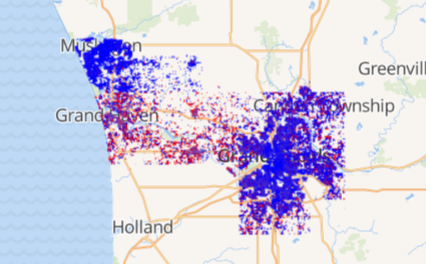 |
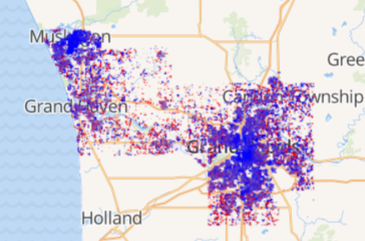 |
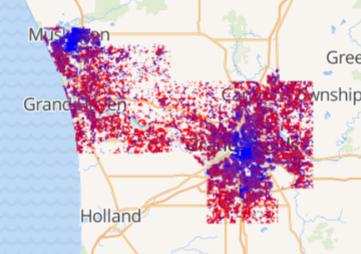 |
| 18 to 29 - 102,126 (19.805%) | 30 to 39 - 96,636 (18,740%) | 40 to 49 - 79,639 (15.444%) |
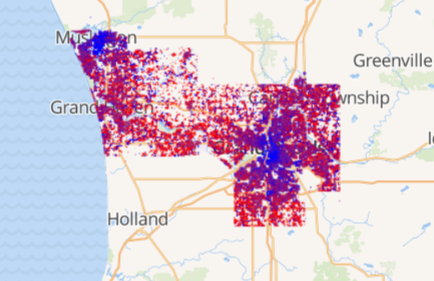 |
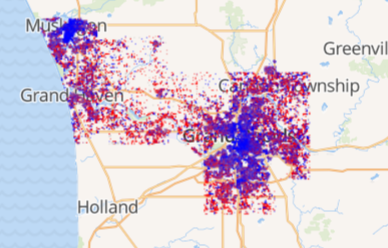 |
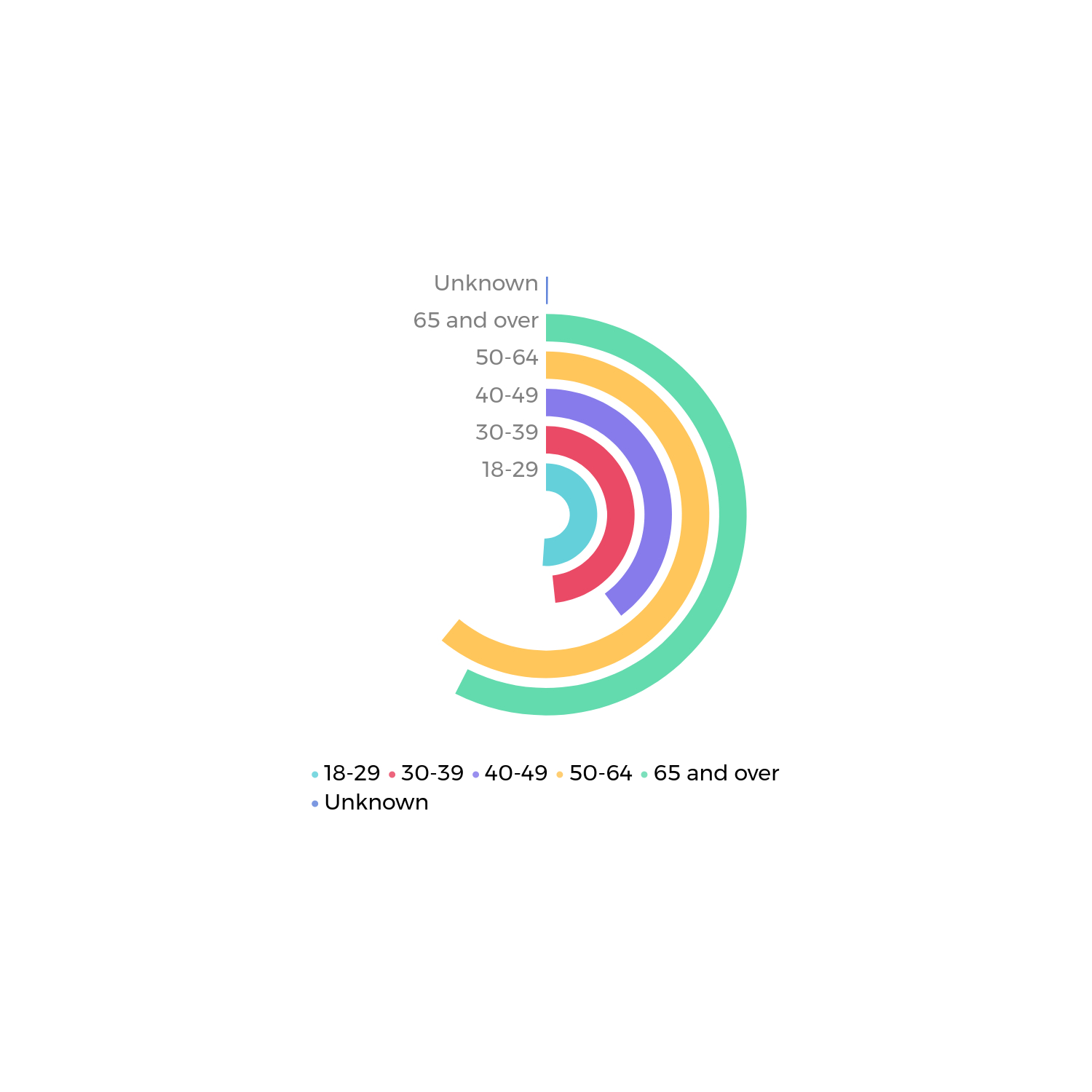 |
| 50 to 64 - 122,057 (23.670%) | 65 and over - 114,942 (22.290%) | Unknown - 270 (0.052%) |
Active registered voters by age distribution - Democratic Party only
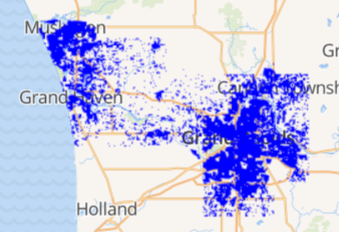 |
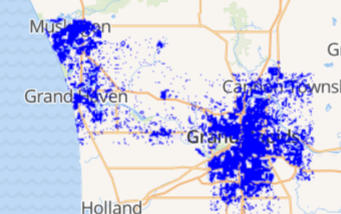 |
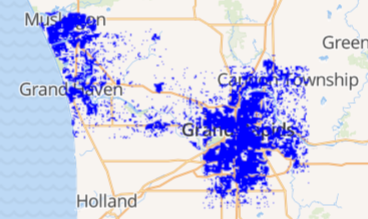 |
| 18 to 29 - 77,908 (27,244%) | 30 to 39 - 57,909 | 40 to 49 - 40,358 |
 |
 |
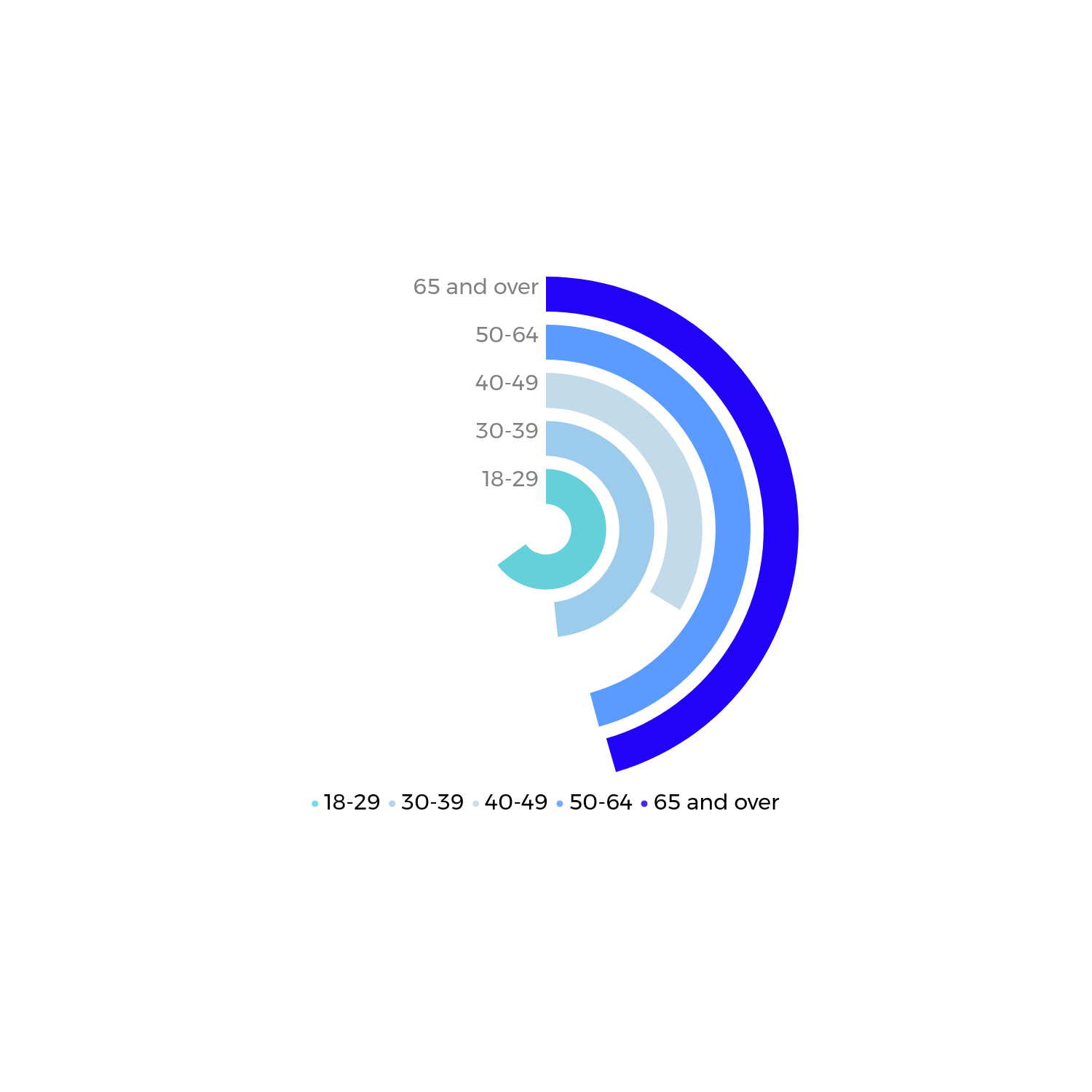 |
| 50 to 64 - 54,990 | 65 and over - 54,641 |
Active registered voters by age distribution - Republican Party only
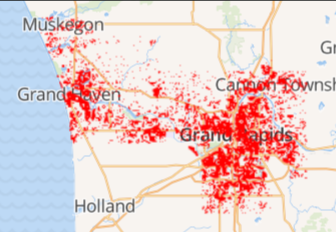 |
 |
 |
| 18 to 29 - 13,194 | 30 to 39 - 14,586 | 40 to 49 - 25,212 |
 |
 |
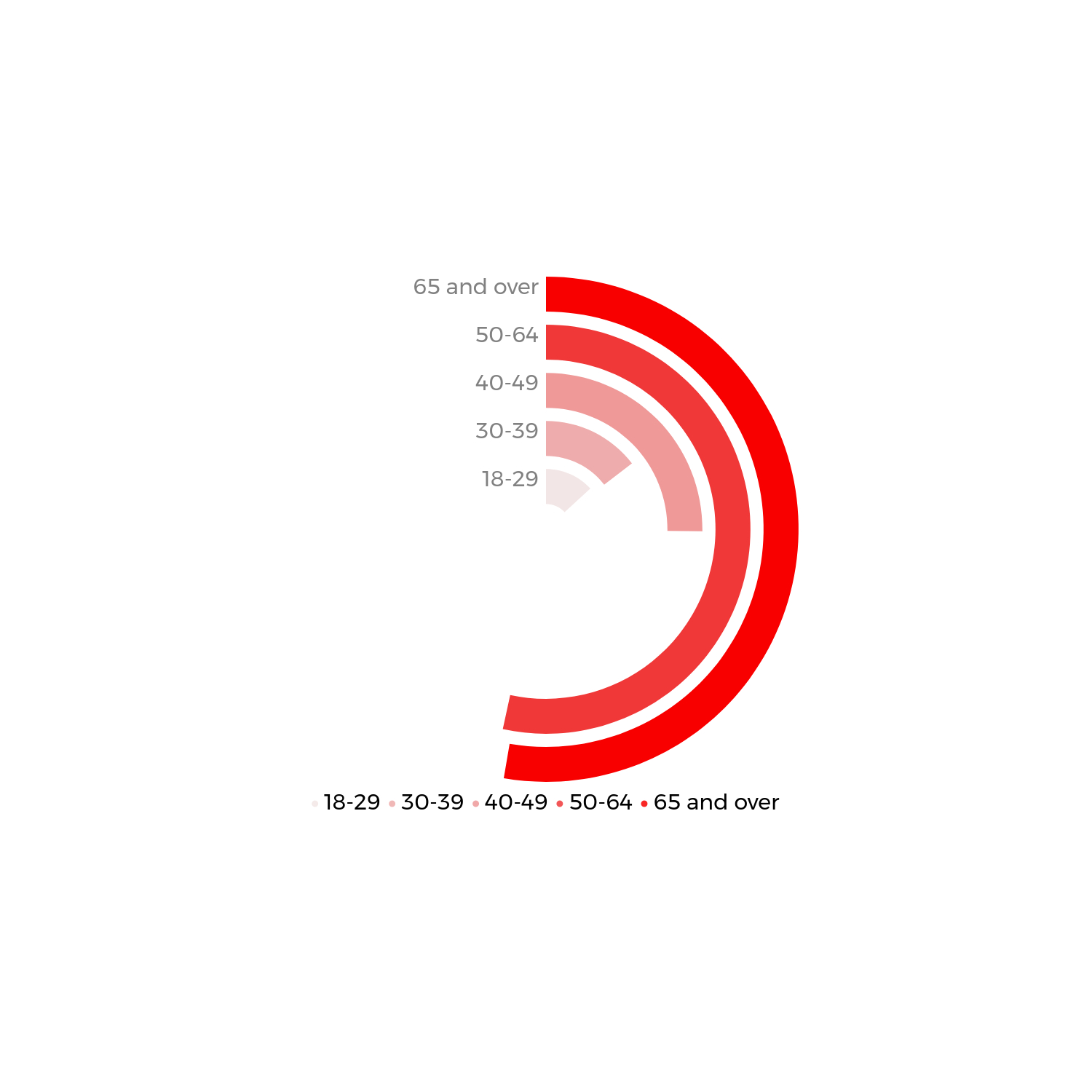 |
| 50 to 64 - 53,388 | 65 and over - 52,674 |
With close to a third of the all-registered voter population the age group 18 to 29 is almost entirely dominated by leaning Democratic - around 77,908 or 80%. Combining that with having close to 30,303 or 10% a non-traditional marriage leaning almost 100% Democratic, Hillary Schouten had already concurred two core pillars to stand on for her race. Her third pillar was a chunk of the general voter population that was likely identified as African-American with almost 34,360 or 97% of all leaning Democratic. Just by default, based on the three pillars, Hillary was looking at 142, 571 voters leaning Democratic in the general election.
The results from the 2022 elections match exactly the leaning ratio of Democratic candidates as Hilary got 186,109 or 54.87%,
While the republican candidate John got 142,321 or 41,91%.
If we look at the distribution of the voters who were leaning before the midterms election of 2022, we could say that the Democratic party got exactly what they had as leaning voters before the election, while the Republicans were able to consolidate independent and republican leaning as one block but failed shortly because the district is cut to be dark blue: +25 points over GOP voters.
Democratic - 285,961 (55.454%)
Republican - 159,130 (30,859%)
Non-Partizan - 70,579 (13,687%)
Most political analyses out there were giving the district as +D11, while we at Scale Campaign think the district is more of solid double digits, and definitely above the 20 points difference.
These analyses are not influenced by the candidate's political stance or beliefs they have expressed in the past or during the race.
Interested to learn more about Scale Campaign, check our one-stop shop for political campaigns Walk Lists - a platform with native canvassing mobile apps on Apple and Google stores and access to commercial or political data.
References:
Admin. (2021, October 2). Scale campaign home. Scale Campaign. Retrieved February 4, 2023, from https://scalecampaign.com/
Gretchen Whitmer. Ballotpedia. (n.d.). Retrieved February 4, 2023, from https://ballotpedia.org/Gretchen_Whitmer
Hilary Schouten’s path to victory is based on mathematics. (n.d.). Retrieved February 4, 2023, from https://www.congress.gov/member/ron-paul/P000583
Hillary J. Scholten | congress.gov | Library of Congress. (n.d.). Retrieved February 4, 2023, from https://www.congress.gov/member/hillary-scholten/S001221
Justin Amash | congress.gov | Library of Congress. (n.d.). Retrieved February 4, 2023, from https://www.congress.gov/member/justin-amash/A000367
L2 data: Trusted Voter Records, consumer data, and Data Mapping Capabilities. L2 Political. (n.d.). Retrieved February 4, 2023, from https://l2-data.com/
Michigan's 3rd congressional district election, 2022. Ballotpedia. (n.d.). Retrieved February 4, 2023, from https://ballotpedia.org/Michigan's_3rd_Congressional_District_election,_2022
Peter Meijer | congress.gov | Library of Congress. (n.d.). Retrieved February 4, 2023, from https://www.congress.gov/member/peter-meijer/M001186
The United States Government. (2022, December 23). Donald J. Trump. The White House. Retrieved February 4, 2023, from https://www.whitehouse.gov/about-the-white-house/presidents/donald-j-trump/
US Congress. (n.d.). Ron Paul | congress.gov | Library of Congress. Representative Ron Paul. Retrieved February 4, 2023, from https://www.congress.gov/member/ron-paul/P000583
US Senate. (n.d.). U.S. Senator Ted Cruz of Texas. Senator Ted Cruz. Retrieved February 4, 2023, from https://www.cruz.senate.gov/
Voter data: Walk lists: Door-to-door canvassing software. generates maps with markers. walk lists. (n.d.). Retrieved February 4, 2023, from https://walklists.com/
Wikimedia Foundation. (2023, January 6). 2018 Michigan Proposal 2. Wikipedia. Retrieved February 4, 2023, from https://en.wikipedia.org/wiki/2018_Michigan_Proposal_2


